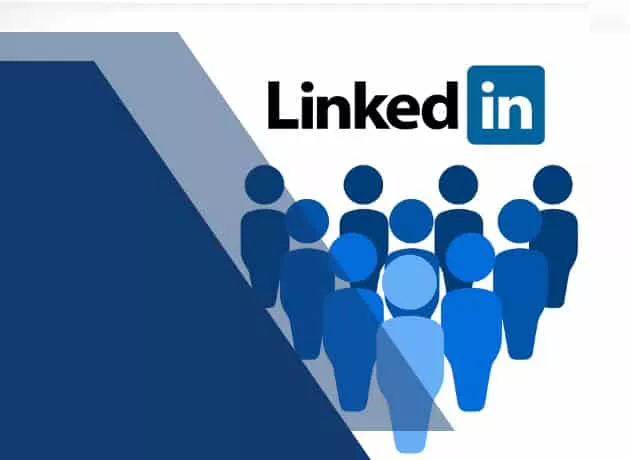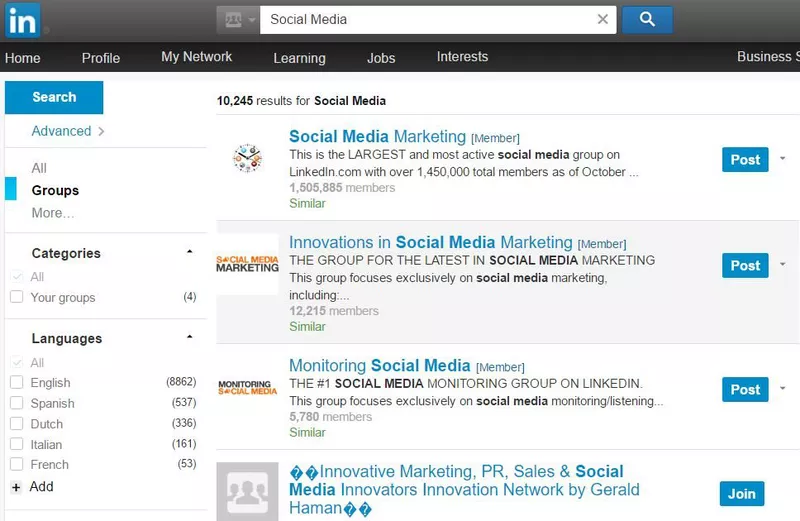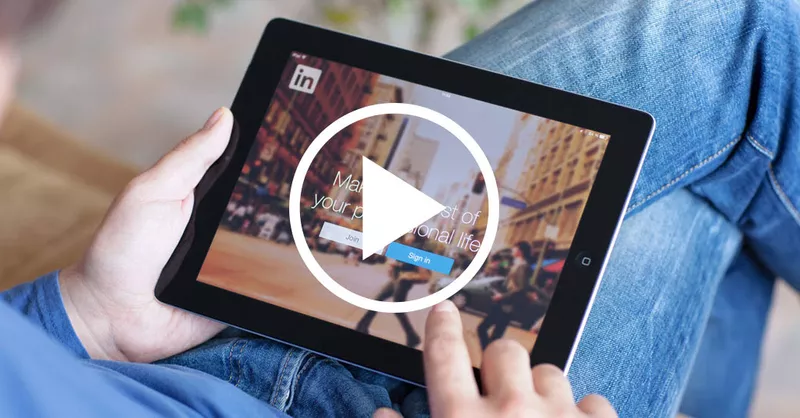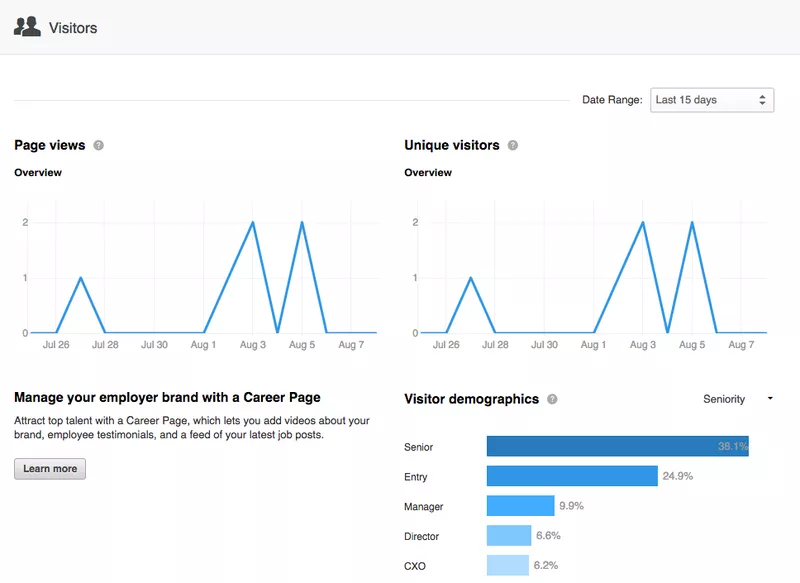

With over 575+ million users worldwide, Linkedin was created with the purpose of being one of the largest professional networking sites in the world. However, it is just for professionals and job seekers, it is also a great way to make connections to generate leads, establish partnerships, and create better brand awareness. It is a great way to add to your digital marketing strategy.
While it falls under the category of social networking, its main focus is to keep it professional, which includes career development, professional connections, industry discussion and other types of business-related activities. Linkedin marketing is definitely different from other social media marketing mainly because the network consists of a completely different audience and the whole point is not to push your business through status updates, images, and other casual posts. The intention of this guide is to help people figure out how to navigate through Linkedin as a marketing platform. Much like every other strategy, it is important to have a strategy, set goals, and create excellent references. To look at the success of Linkedin marketing, we will
- Act S.M.A.R.T
- Constantly post information
- Start adding LinkedIn groups, communities, and people linked by interest clusters.
- Set and focus on targets
- Incorporate the employees as part of the plan
- Alert your friends via posts, tags, emails.
- Find native video and upload
- Keep tabs on your own LinkedIn performance.
- How can you make high-value customers into your advertisers.
Want to know the history of social media? Click here for more info
Tips to successful Linkedin Marketing Strategy
1) Act S.M.A.R.T

The best way to find create a similar plan for your specific situation, in your environment and tailored to your projections of what success would be to implement S.M.A.R.T goals. S.M.A.R.T stand for:
1. Specific.This is when dreams are turned into clear and precise detailed and realistic goals Example is “losing weight” compared to “losing 10 kgs by Christmas”.
2. Measurable. Being able to measure your success and track the progress is of great importance. “Milestones” are markers that one uses to fix a specific target and recognize the achievement. You can then readjust challenging yourself to do better. 1000 push ups in a day as a milestone for example, then pushing that to 1000 in an hour are a simple example.
3. Attainable. Ever heard people say,”know your limits”? Well, this is the prime example of that phrase. A person should aim to go above and beyond and figure out what they can do but try not to set goals that are impossible.
4. Relevant. Finding the goals that are worthwhile and applying them to your overall achievements is an important factor of the design. The relevance varies from point to point so you should try to reassess your S.M.A.R.T goals regularly. The point of relevance is to ensure whichever goals you choose benefit you positively.
5. Time bound. Good goals should have time targets accompanying them. “I want gain more weight” then becomes “I want gain 10 pounds of lean muscle!”. The individual who sets these type of goals usually is very motivated to achieve them which carries added value.
2. Making a respectable, approachable, attractive company profile.

You need a virtual existence and character you can display to customers from all walks of life. Choosing the right profile picture is vital for operations: this calling card stands as the visual introduction and the initial impression formed of you and your business. Make sure the picture is decent, recent, make sure your face makes up roughly 60% of the picture and dress for the picture like you would for work. Lastly, “smile with your eyes”. Next is choosing the right background photo. This is the secondary visual image at the top of your profile which is meant to grab people’s attention whole showing more information on you. The background image helps make an image that is memorable, engaging and unique in a visitor’s mind.Third comes the headline. You can be more creative than just posting a job title when you can describe your role, how you feel it suits you and how to further sell your image. Sales people’s pages are great references for interesting and engaging profiles. Fourth in line is to add a summary about yourself. Tell your story as you see it so visitors get a full experience when they see your page. Try your best to list the relevant skills you hold clearly. Clear and precise showcasing of the range of services you offer will act as a highlight.
3. Constantly post information
Depending on the niche chosen or the profession you represent, there is a unique opportunity to represent yourself,your skills and probably your business.Constantly posting information, relevant and updated information that brings awareness to the company profile is a healthy habit. Having a network means there is a commonality shared of which you must aim to share information that brings more value to them. Making use of the LinkedIn Feed to consistently provide or be a part of a positive action of sharing good, relevant and helpful information will spread goodwill that will draw more attention as you grow your network. Sharing comments from your posts and commenting on other’s posts within your community adds the value of your prominence for contributing to matters that are important to you. The more content shares and comments the more established your expertise and leadership credentials get recognized. If you can write long comments they will attract more retention and possibly more exposure to your profile. The responses you receive will promote engagement and as you watch the responses you receive affirmation and data corresponding to your related posts.
4.Start adding LinkedIn groups

Growing the network is one of the greatest features of this platform. Groups and communities serve as collectives driven towards a certain relatable goal. The more people you connect with the more suggestions the algorithm will be able to make in terms of similar people or people with relatable content and interests. After requesting permission for connection and getting accepted, your only obligation is to keep up vibrant, interesting conversations going.
5. Set and focus on targets.
Depending on the final result the general targets for most companies is:· Create Brand Awareness· Get good leads· Shore up reputation of the company or brand· Initiate correspondence with your desired audience· Sell a product or service
6. Incorporate the employees as part of the plan
The best brand ambassadors in the biggest companies are the employees. For example, Nike is so particular about this very aspect that from top to bottom the employees can tell you about their products. When the very fabric in your offices is guided towards the same goal then the chances of success are heightened.
7. Alert your friends via posts,tags,emails
 (Image credits: collegeinfogeek.com)
(Image credits: collegeinfogeek.com)The people we know and trust like friends, colleagues,peers, family are more likely to trust a new application or try out a platform because they were advised to do so by someone they are comfortable with. Somehow referrals from others we know reduce the perceived risk of a new technology. Mention them in your posts, provoke a reaction or response. Tagging people enriches a post when they respond and increases reach. When they are tagged they are notified and so are their contacts on their network.
8. Find native videos and upload

These days in the social era, video is considered the standard form of entertainment, edutainment and awareness. Conventional adverts still exist but in smaller less relevant numbers. Video that is uploaded to or created on social networks and played in-feed is the new frontier of communication. When the visual aspects are not completely understood is when text is used to compliment the video but most use both simultaneously.
9. Keep tabs on your own LinkedIn performance.

Monitoring performances of strategies and ideas is what makes efficient plans. The feed shows most of the activity of you and you in your network. Comparisons with other successful people or the competition profiles helps with readjustment of goals and general improvement. The LinkedIn algorithm analyses initial user engagement and checks for spam based on engagement and credibility so quality is key. Track your metrics and figure out which demographics work best for you. LinkedIn Analytics is an essential part of any LinkedIn based marketing plan because it tells you exactly what is working and what isn’t in your strategy. LinkedIn general research shows that most posts tend to get the most engagement in the morning and after business hours.This plus other detailed analytics to show which type of content is preferred by the public and engaged with more is key to success.
10. How can you make high value customers into your advertisers.
This is where the term “Social Selling” comes in. Like the founders Recruitment teams are a real team – they know that to succeed at their job, they have to make a real conscious effort;blog, share the job banners on their personal LinkedIn profiles. Social Selling in general means convincing or pitching well enough to your most valued customers that they feel emboldened enough to sell their idea(your site/product) to their family and friends and hope the cycle continues. It’s hard to imagine the founders of LinkedIn having pictured 600 million subscribers world wide and 90 million business accounts. But when your motives serve the purpose of catering to demand in an impoverished sector of the market and provides value by solving a problem then the chances of success become higher.
Want more tips and tactics to start conversations with your customers on Linkedin? Check it out here
With these tips for successful Linkedin Marketing set, let us take a look that how some companies have found success on Linkedin by:
- 1) Networking with a base in common sense
- 2) Looking for conversation starters or triggers
- 3) Controlling and watching the conversation
- 4)Being prepared for rejection
- 5) Being persistent but not pushy
- 6) Approaching marketing from different platforms
- 7) Providing a message that is short and sweet
- 8) Being willing to change if the strategy is not working
- 9) Meeting potential customers and shareholders in person
- 10)Being patient
- 11) Producing creative content
- 12) Making use of the optimization data stream
- 13) Promoting directly
- 14) Using Linkedin Ads
- 15) Partnering with other marketing firms
1: Networking with a base in common sense
Many people have a very skeptical mind and are simply unwilling to easily open up to strangers even if intent is good and you have the right references. Online relationships need time to develop to forge a bond of trust and rapport. This is why so many firms’ choice of automating and bulk-sending(if not spamming) generic messages is not recommended. People are still as skeptical online if not more so than they are in person.
2. Look for conversation starters or triggers
People on LinkedIn give cues asking you to spark conversation. There are signs and openings like content based mutual association. That is,things they like,comment on and shared or their company activity. But the easiest and probably most efficient is engagement in groups you are mutually a part of-spark engagement with interesting questions and conversations. Act quickly soon as these cues show up.
3. Control and watch the conversation
In the movies profiling sales one learns of the “always be selling” theory, well in this case you always aim your conversation towards increasing awareness of your company or products as a ‘gentle’ suggestion. For example when in discussion in a group about fitness when you represent a gym you could lightly suggest a couple of training techniques after which you mention a story involving your company or gym. Nobody likes to always be sold to but hints are generally accepted as part of banter. “When are you looking at changing your suppliers?” is much better than “Are you looking at changing your suppliers?”Sharing topical information in a relevant,thought provoking and time efficient way will bring favourable results.
4. Be prepared for “the No”
When selling, (because at the core that’s what you’re doing;selling yourself,an idea,your company,a product etc) posing question in a way that allows for a rebuttal when a customer rejects the idea,is standard. Sensitivity, attentiveness and politeness are critical to great rapport. But even then you might no be able to avoid rejection so prepared rebuttals are the best cover.
5. Being persistent and not annoying.
This is an art, especially online when people are so easily triggered and have many options which give them a sort of attention deficit. It’s very difficult to tell what exactly is going on but acting on that first level of instinct usually works,the one that says it’s polite and logical if…For example; It’s polite and logical if..I don’t get a response for my first message I assume they might not have seen it and try again(ONCE more).It’s polite and logical if..they decided to ghost my message the first time so I need to change angle and give them a reason to respond this time.Lastly, it’s polite and logical if..even with automated responses are a norm I will write a natural and organic message because the reader expects one.
6. Attack/approach/from different platforms
Splitting up the message across platforms is just a logical approach to marketing not to overload with information but to suggest or remind or customers of the offer and more importantly show the social proof behind your campaign/product. But sources deem LinkedIn to be a hybrid platform that exists between personal and professional conversation which is why it surplants the norm of email even in this day and age. So even though this platform is so effective the moment you switch to a different platform shows the progression of a relationship. When you do change make sure you employ the same method that made the counterpart comfortable with you which includes a fluid theme,concept and message or identity throughout.
7. Short,simple ‘sweet’, beats overreaching,vague ‘deep’
Having a message doesn’t mean conveying the depth of detail all at once… clients especially big customers are more likely busy and unable/unwilling to read long drawn out messages. Keep messages to a single precise point..one good enough to merit a response. Then, go step by step and only after being asked EXPLICITLY for “more information” do you dive into the details.
8. Be willing to change if it’s clearly not working.
No strategy is 100% guaranteed success, there is no one formula for every business to follow. Circumstances are different for people,businesses etc. Put yourself in targets mindset to try find a angle that may be more interesting to them to answer to. Apply to their self consciousness or plain vanity;)
9. Let’s meet for real,in person!
Even with the most interesting tech advances, ease and comfort of communication and passing of information plus upgrade in virtual reality there still is no substitute for face to face conversation. Face to face creates connection, rapport and businesses relationships that no video conversation can reach. LinkedIn users hint towards this saying which events they are attending on their profile, conferences they are attending,or places they might be trying for the first time. If she is coming to your town it would be interesting to casually and not alarmingly suggest or maybe “bump into” her at the same place. When chance arises do not fail to take the relationship offline.
10. Be patient and stick to the script
Relationships usually take time and effort to build so one of the important parts of any strategy is staying on the mind of your target. Staying relevant is as simple as at least being visible in your target’s feed or supply of information. Plus let them know they are on your mind and hopefully you’re on theirs.
11. Creative content
Try a theme based content approach to keep things live and interesting. Weekly or monthly try posting information (related to your product or company) but following the dedicated theme. ” Monster Monday”, “Trippy Tuesday”…rhyming across all genres of text and communication is interesting. Infographics are a lovely way to earn organic traffic and promote your LinkedIn page.
12. Make use of the optimisation data streams
Using Search Engine Optimization and Key word research tools is never a bad option. SEO increases the chances of organic searches finding your profile this exposing you to more of an audience and key word research (depending on the strategy) like low difficulty words helps point out words that will be more appealing to your chosen demographic or segment.
13. Promoting direct
Promoting your LinkedIn page directly through newsletters and blogs has a great effect of improving your organic searches and providing more social proof. When journalists tout about a LinkedIn page many people tend to listen. With a strong core following,great content and excellent relationship record success is still not guaranteed but it is much more likely.
14. Juice up on LinkedIn Ads
LinkedIn has excellent Ad targeting potential: members supply detailed information about their profession,skills, associations and professional interests. Sponsored content assists businesses amplify the reach they are just struggling to reach organically,Text Ads:are pay-per-click(CPM)ads that feature on the LinkedIn homepage, profile pages, Groups pages, search results pages etc and email sponsored ads like traditional ads get a sturdy line of high value customers.
15. Partnership with other marketing firms or Objectives
Last but not least once there is a common goal and two companies with the same interests willing to work together then marketing joint ventures are formed. Post swaps, guest lives and joint webinars are examples of how interesting a page could potentially become by teaming up. That plus the fact that resources and potentially expenses especially fixed costs are shared. Google and NASA created Google Earth through a joint venture which was one hot topic in LinkedIn feeds for a while.
For more articles about Linkedin and more articles regarding it. Click here
Conclusion:
Although this might sound sometimes more like dating advice than a guide to LinkedIn marketing but you’d be surprised how many ways that line seems a little blurry. There are many approaches to improving success rates of Linkedin some including blogging more ,with great storytelling and posts that are full of emojis but even that does not guarantee success. So this article is aimed at guiding businesses and individuals at improving and/developing a better more refined approach to LinkedIn marketing strategies based, initially, on how the founders set up the company and expanding to what nifty,smart and experienced companies today are doing to get noticed.
To get more articles regarding social media promotion and strategies click here




